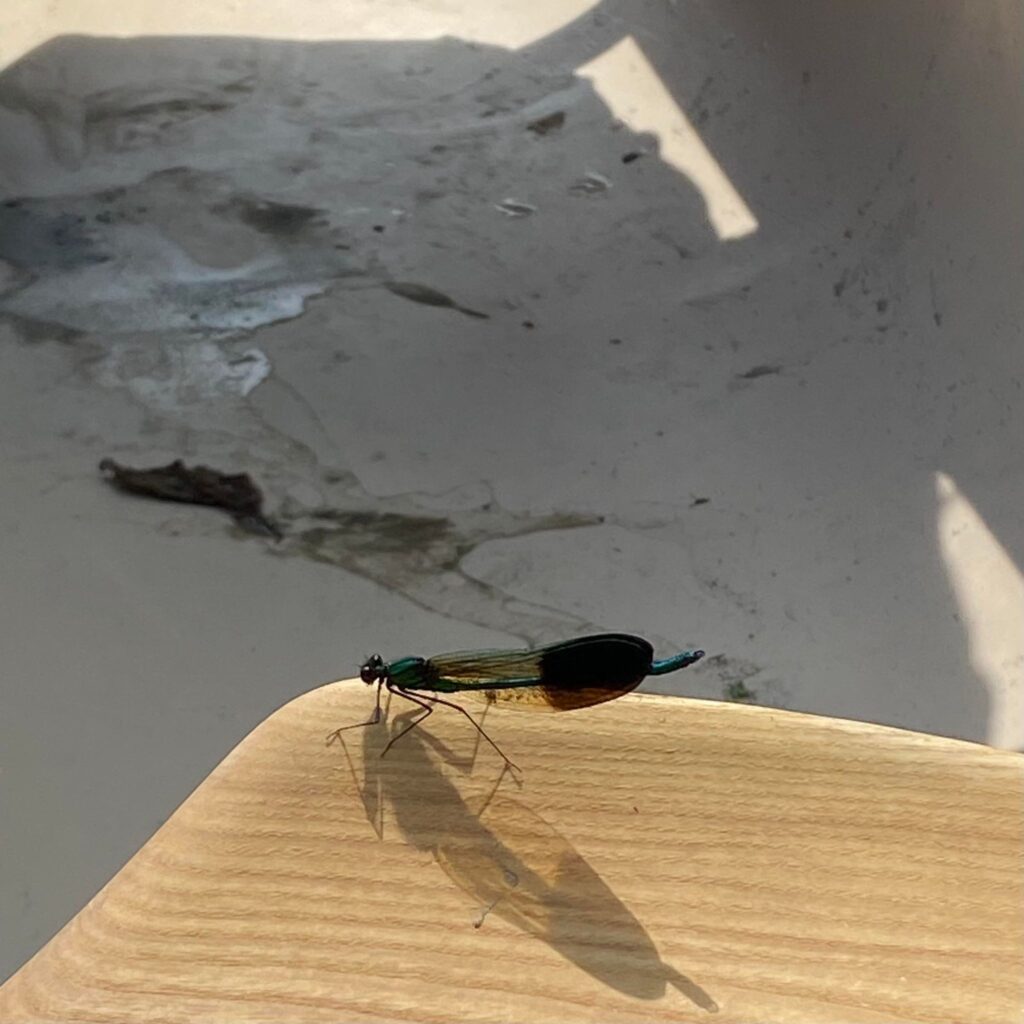
Thursday evening, after the facilitators and guides discussed next steps, it was decided that we would stay at the same spot today, Friday, and work on our white-water technique on calm water, then practice safely swimming in the rapids, and then, later in the afternoon, practice canoeing in the rapids.
One of the goals of the expedition is to make new friends, so the teams are shuffled around, and everyone has new partners.
After breakfast, we quickly find ourselves on the water, going up the river a bit and separating into two groups to start learning new techniques: cross bow rudder, C stroke, using the gunwale for increased power, along with a few others. Then we try to apply these techniques in real situations but with minimal current. We haven’t quite mastered eddy turns, but we still have enough time to fine-tune those skills.
Next is another critical skill to learn: how to swim in rapids, if we unexpectedly find ourselves in the water. Things start to get serious when we realize we’re going to have to get wet. Suddenly, things are much quieter on the banks of the river. Maybe some people regret not paying too much attention when the guides were explaining things. Julien goes over the instructions again to make sure everyone understands what they’re supposed to do.
One by one, the participants jump in the water and practice feet in front of bum and feet up while sculling. Nick is at the front and Jake is positioned halfway, while Amy keeps watch at the bottom of the rapid. It’s not exactly an easy technique to master and we can tell not everyone is comfortable with it. However, this technique is crucial to ensuring the safety of the participants when going over the rapids along the Spanish River, and so we must practice it. Not wanting to be left behind, the volunteers join in, some quite enthusiastically even.
We head to camp for lunch. The chicken burritos are quickly devoured.
Then we get back to it. This afternoon will be quite busy too: the participants need to get comfortable with the technical skills they need to paddle away the kilometres and R2 and R3 rapids that we’ll encounter along our way.
First lesson of the afternoon: how to read rapids. If we want to get over them safely and have fun, we need to know where to go through them to avoid obstacles. The guides do their best to make the lesson interesting, but it’s obvious many of the participants still find the notions a bit abstract. But no need to worry, after one or two rapids, things will start falling into place.
And now, the highlight of the day! It’s time to test out everything we’ve learned the past two days. We’re finally going to go down a rapid. I can feel a mix of excitement and anxiety in the group. But the level of risk they’re apprehending is much higher than the actual risk they’ll face. We’re definitely in adventure mode now!
Everyone goes over the rapid successfully, i.e., no one flips over. The participants are mostly dry and super happy. Some carry the canoes up to the top of the rapid for a second descent. Smiles abound and the participants enthusiastically cheer each other on.
We finish the day with a little gathering. The participants each have a chance to evaluate their day on a scale of 1 to 10, explaining what they liked the most and what they would like to improve over the next days.
What does tomorrow, Saturday, have in store? We’ll be covering 17 km with a few rapids to spice things up.
Louis-Étienne Provost
Volunteer photographer-blogger for the On the Tip of the Toes Foundation
—
Translated by Anna Tomczyk